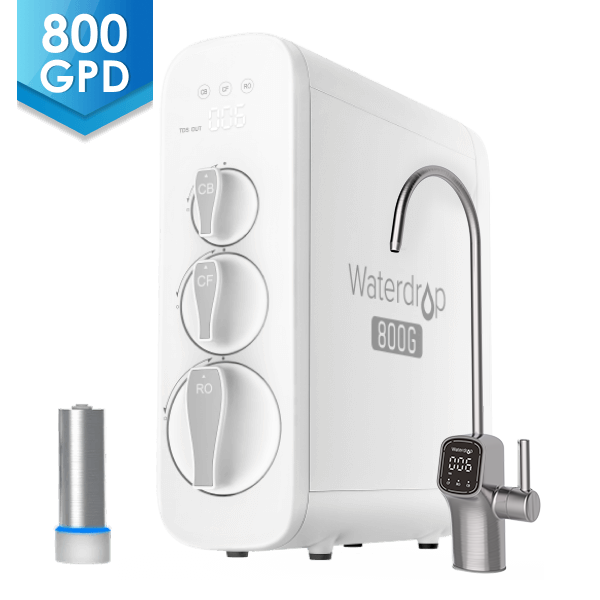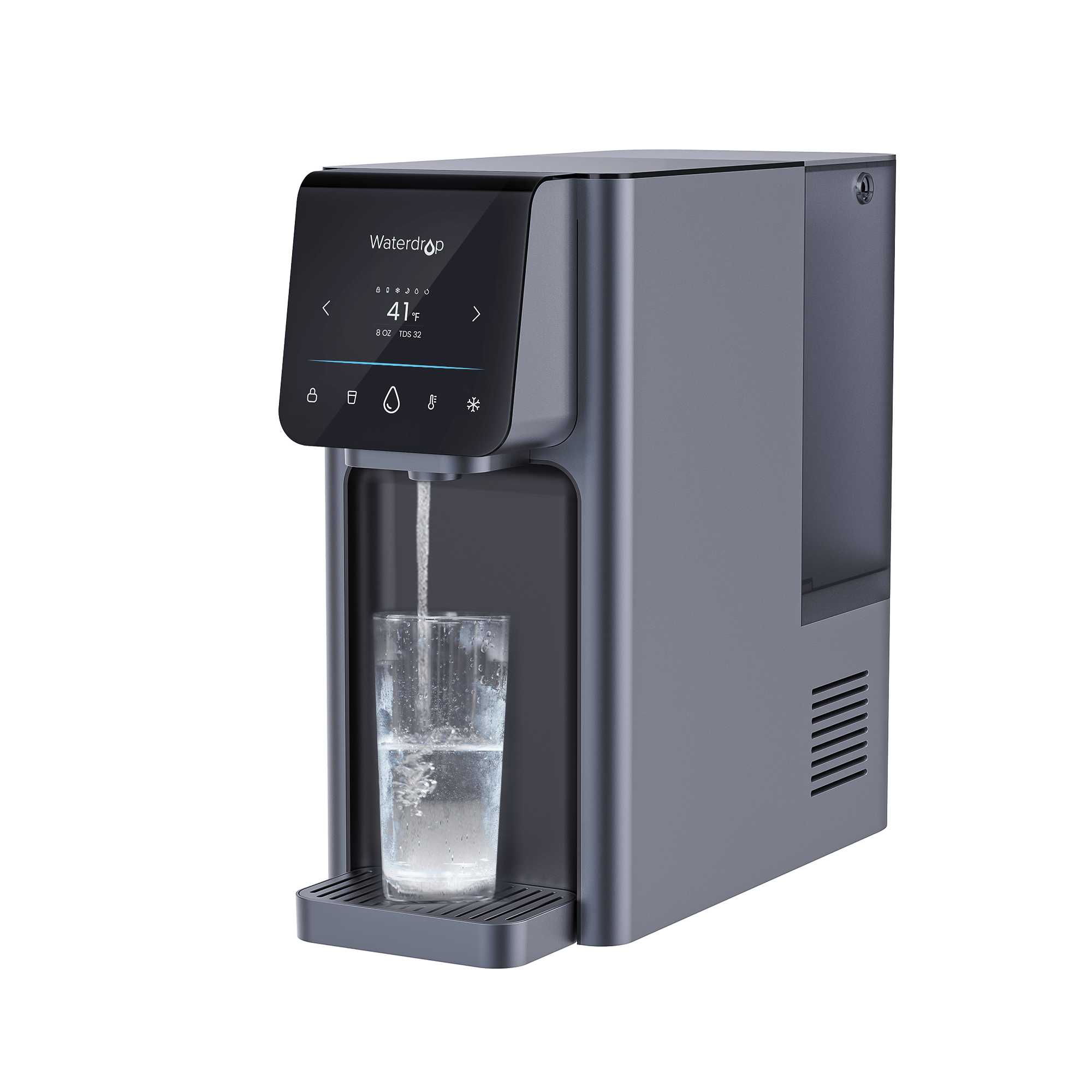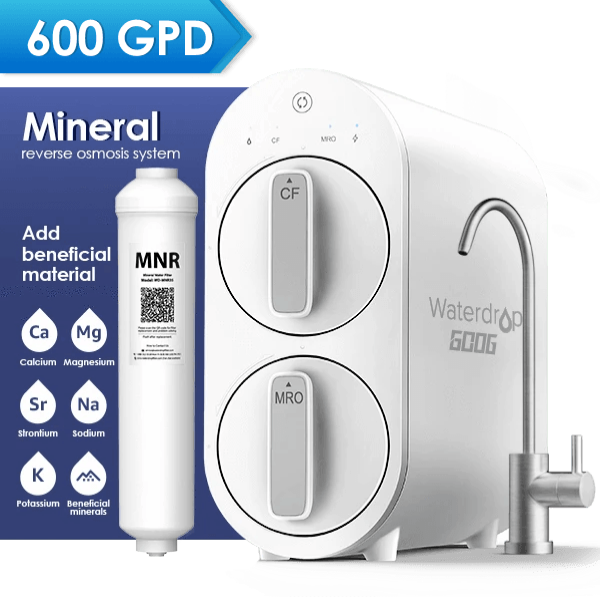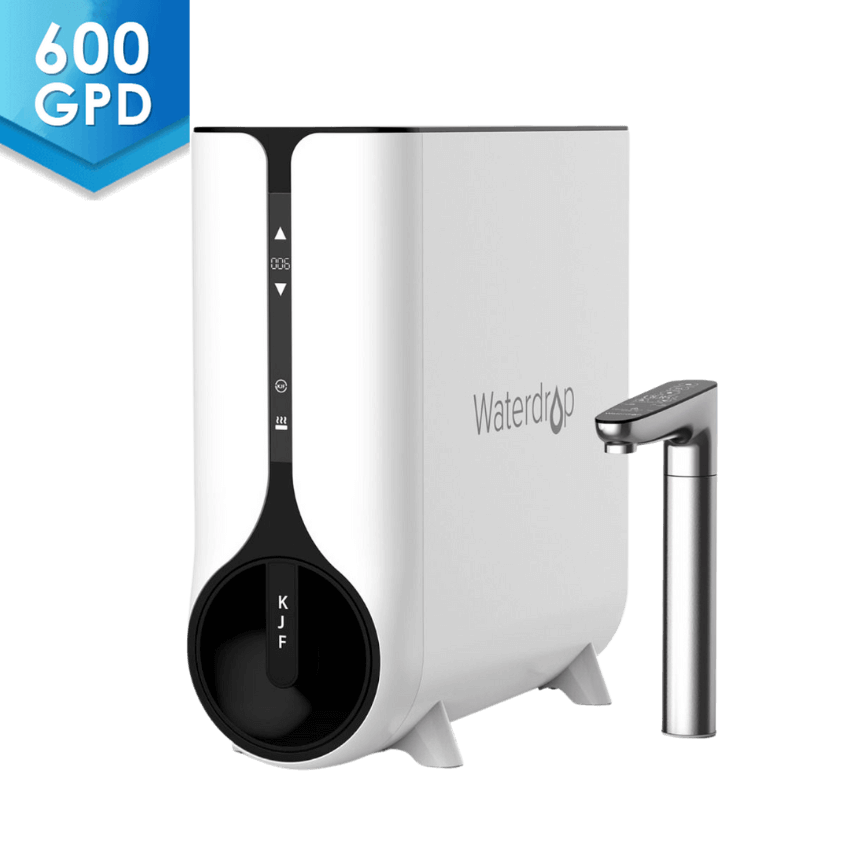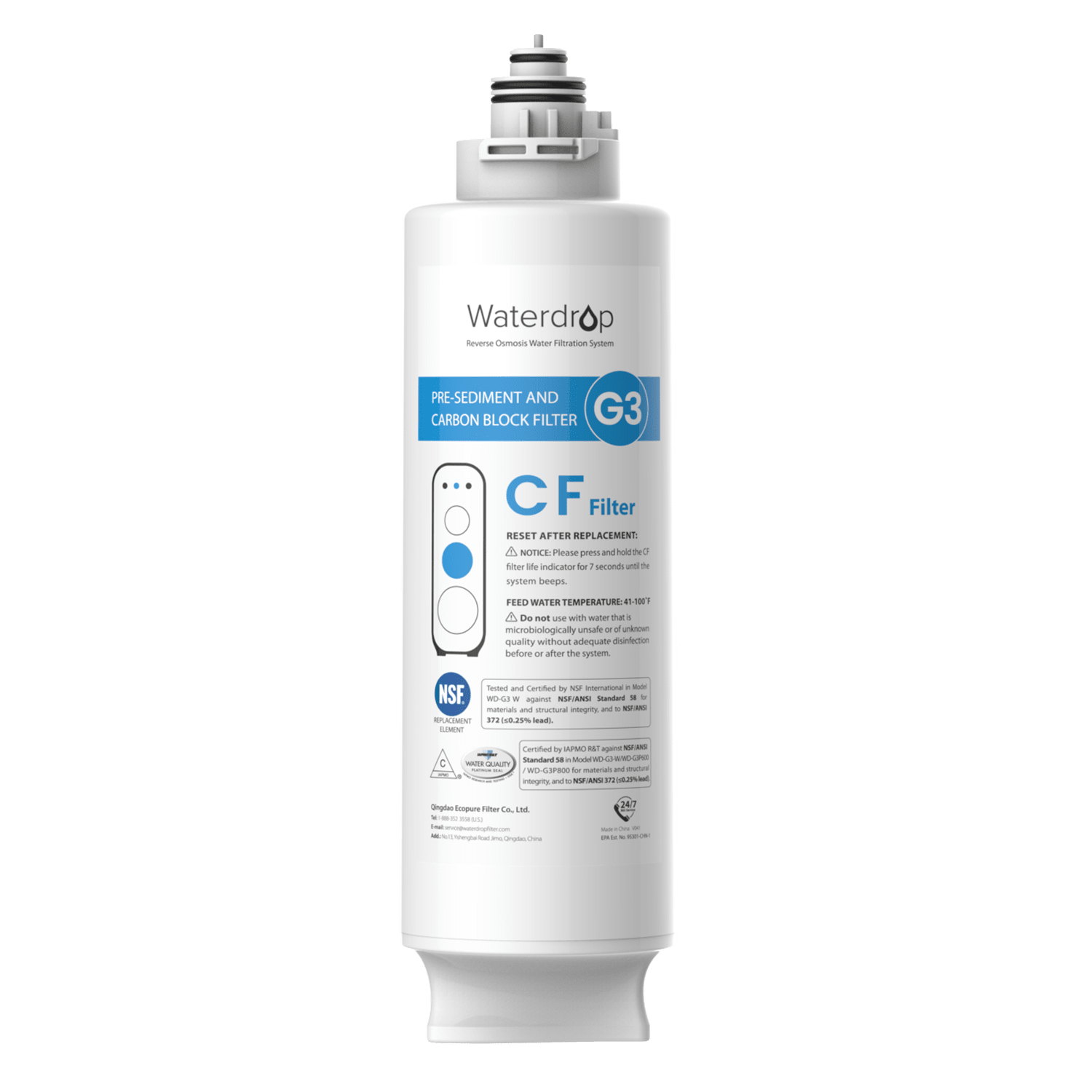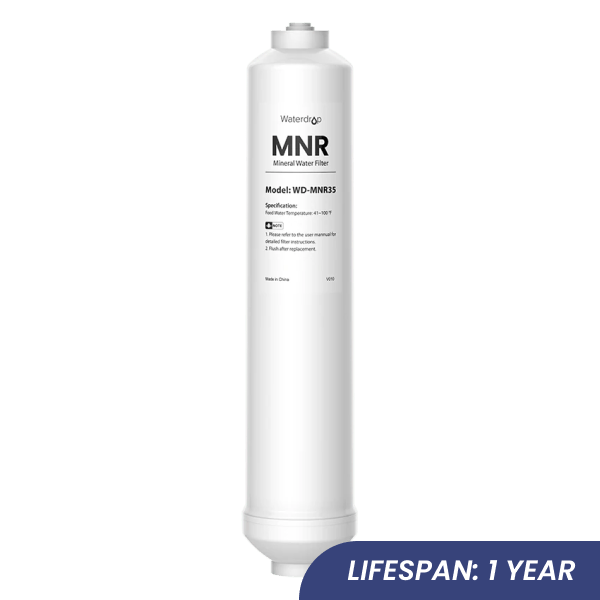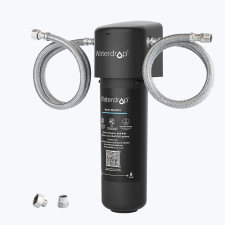What Are Bottled Water Dispensers?
Bottled water dispensers, also known as water
coolers, utilize a 5-gallon water bottle placed upside down. Water is dispensed via
gravity
when the spigot is pressed. These systems lack filters and rely on pre-filtered bottled
water. Maintenance is essential to ensure the bottles have enough water for operation.
Without bottles, the dispenser won't provide water.

Is the Bottled Water Dispenser the Right Choice for You?

Bottled water dispensers offer convenient access to clean water in homes, offices, and
public spaces, making hydration quick and easy. They don't need a plumbing connection,
allowing flexible placement, and can dispense both cold and hot water (depending on the
model). However, it's crucial to recognize that while they offer convenience, there are
drawbacks to consider.
Have you ever noticed the significant space occupied by bottled water dispensers or faced
the challenge of maneuvering heavy water jugs for replacement, risking spills and potential
injuries? Changing those large water bottles can be especially inconvenient for older adults
and children, given the weight and size of the 5-gallon jugs. This struggle in handling and
replacing the bottles further highlights the practical downsides of relying on bottled water
dispensers.
Yet, these are just the beginning. There's more to consider, including potential
environmental impact, water expenses, and health implications. It's worth delving deeper
before making a decision.
Environmental Impact


Plastic bottles are usually buried or flushed into the ocean
Globally, 300 million tons of plastic are produced on an annual basis. Approximately
18%
of
the new plastic being produced gets recycled or reused. The rest is buried or
flushed
into
the ocean, which means practically every piece of plastic that has ever been made
still
exists in some shape or form.
Plastic bottles leave a huge carbon footprint
In the United States, about 76 million barrels of oil are needed to manufacture,
transport,
store, and dispose of the plastic bottles used in a single year. That’s enough oil to
fuel
4.3 million cars, and environmental experts estimate that it takes 1 gallon of oil to
produce 10 gallons of bottled water. Eliminating bottled water reduces your company’s
carbon
footprint by 20 pounds for every 10 gallons of bottled water that you do not consume.
The Hidden Costs of Bottled Water


Water Expenses
Relying on bottled water dispensers can be pricey. With 5-gallon jugs at about $10
each
and
a daily intake of around 0.5 gallons, you might spend around $365 per person
annually. A
family of four could surpass $1,460.
Harmful BPA Content
Bottled water dispenser bottles often contain BPA, a chemical that can leach into
water,
especially when exposed to heat. BPA is linked to health issues like reproductive
problems,
obesity, diabetes, and certain cancers. Some bottles labeled "BPA-free" still pose
similar
risks due to other chemicals.
Potential Bacterial Growth Risk in Bottled Water



Bacterial Growth Risks
Bottled water dispensers may present an unsuspected challenge: the potential for
cultivating
and propagating bacterial growth. A comprehensive study undertaken by researchers
from
Northeastern University in Boston has unveiled critical insights into this matter.
Over
a
span of two months, regular testing of water from 10 bottled water dispensers
consistently
unveiled bacterial counts ranging from 2,000 to 1 million organisms per milliliter.
Easy Bacterial Growth in Large Water Bottles
This elevated bacterial presence surpasses the EPA's tap water limit of 500
organisms
per
milliliter, a standard also upheld by the FDA for bottled water. The design of
bottled
water
dispensers, which store water in containers instead of directly connecting to a
water
supply, inadvertently accumulates contaminants. As air replaces dispensed water, it
creates
an environment for harmful microorganisms to thrive. Replacing bottles can introduce
more
contaminants, with 5-gallon bottles sometimes remaining in use for an entire week,
providing
ample time for bacteria to multiply.
Health Risks Posed by Harmful Bacteria
These microorganisms, when ingested, can cause gastrointestinal distress,
manifesting as
symptoms like diarrhea, vomiting, and nausea. More alarmingly, pathogenic bacteria
can
lead
to severe illnesses, particularly for individuals with compromised immune systems.
What Are Bottled Water Dispensers?
Bottled water dispensers offer convenient access to clean water in homes, offices, and public spaces, making
hydration quick and easy. They don't need a plumbing connection, allowing flexible placement, and can
dispense both cold and hot water (depending on the model). However, it's crucial to recognize that while
they offer convenience, there are drawbacks to consider.

Is the Bottled Water Dispenser the Right Choice for You?
Bottled water dispensers offer convenient access to clean water in homes, offices, and public spaces, making
hydration quick and easy. They don't need a plumbing connection, allowing flexible placement, and can
dispense both cold and hot water (depending on the model). However, it's crucial to recognize that while
they offer convenience, there are drawbacks to consider.
Have you ever noticed the significant space occupied by bottled water dispensers or faced the challenge of
maneuvering heavy water jugs for replacement, risking spills and potential injuries? Changing those large
water bottles can be especially inconvenient for older adults and children, given the weight and size of the
5-gallon jugs. This struggle in handling and replacing the bottles further highlights the practical
downsides of relying on bottled water dispensers.
Yet, these are just the beginning. There's more to consider, including potential environmental impact, water
expenses, and health implications. It's worth delving deeper before making a decision.

Environmental Impact
The Hidden Costs of Bottled Water
Potential Bacterial Growth Risk in Bottled Water
Why is the Tankless RO System a Better Choice for You?

Economical choice

It can be used for up to ten years after purchase. Take the popular Waterdrop
G3P800
as an example, you only need to pay 255 dollars per year on average, which
includes
the purchase price and filter replacement costs over the course of ten years.
Take the popular Waterdrop G3P800 as an example
Learn More
Provides pure water, Instant Filtration, offers a safer option.

BPA-Free, ensures healthy drinking water.
Eco-Friendly, reduces plastic waste, lowers carbon footprint.
One-time installation for long-term effectiveness.

High bottled water costs.

Relying on bottled water dispensers can be pricey. With 5-gallon jugs at about
$10 each and a daily intake of around 0.5 gallons, you might spend around $365
per person annually. A family of four could surpass $1,460.
Breed Bacteria
The potential for cultivating and propagating bacterial growth.
The potential for cultivating and propagating bacterial growth.

Bottles may contain harmful BPA, posing health risks, especially to
infants.
Generates significant plastic waste.
Need for frequent bottle replacements.



Economical choice
Average yearly cost: $255
Learn More
Provides pure water, Instant Filtration, offers a safer option.

BPA-Free, ensures healthy drinking water.
Eco-Friendly, reduces plastic waste, lowers carbon footprint.
One-time installation for long-term effectiveness.


High bottled water costs.
Average yearly cost: $1,460
Learn More
The potential for cultivating and propagating
bacterial growth

Bottles may contain harmful BPA, posing health risks, especially to
infants.
Generates significant plastic waste.
Need for frequent bottle replacements.

Why Choose Waterdrop Tankless RO Systems?
Much Purer

Reduces 1000+ harmful substances
NSF/ANSI 58 & 372 certified
NSF/ANSI 58 & 372 certified
More Convenient
Large capacity,
fast water flow
Easy installation &
filter replacement
fast water flow
Easy installation &
filter replacement

More Secure
BPA-free
Instant Filtration
Instant Filtration
Lower water bill
No need to buy
bottled water
No need to buy
bottled water
More Cost-effective
More Eco-Friendly
Less wastewater. Embracing a plastic-free planet

Choose the Right RO System
Hear from Our Pros and Users
Sign up for water tips and stay informed!
Customer Services
24/7 support team
Shop Now, Pay Later
0% APR Prequalify today
Exclusive Offers
Subscribe and save big
30-day Return
Worry-free shopping
Filter Replacement Cost
As low as 0.4 dollars/day
Filter type

CF

CB

RO
Replacement cost
$29.99
$29.99
$129.99
Replacement cycle
6 months
12 months
24 months
Average daily cost
155 Dollars/Year = 0.4 Dollars/Day * 365
Days
At the moment, a bottle of 34 oz water costs about 2 dollars on the market. A family of three
consumes about 200 oz of water per day, which means that a family of three will
have to
pay at
least 12 dollars per day, 360 dollars per month, and 4000 dollars per year for
water.
However,
most RO water filter systems on the market are priced between 400 dollars and 1,000 dollars. It
can be used for up to ten years after purchase. Take the popular Waterdrop G3P800 as an example,
you only need to pay 255 dollars per year on average, which includes the purchase
price
and
filter replacement costs over the course of ten years. As a result, you and your
family
will
always have access to clean water.
Relying on bottled water dispensers can be pricey. With 5-gallon jugs at about $10 each and a daily intake of
around 0.5 gallons, you might spend around $365 per person annually. A family of four could surpass
$1,460.


